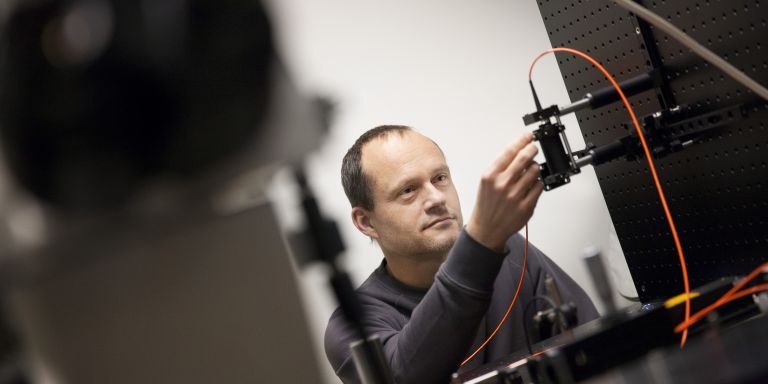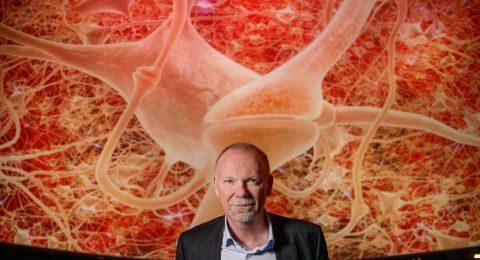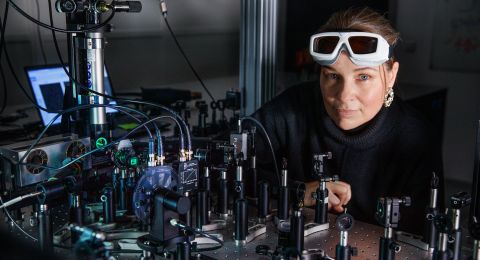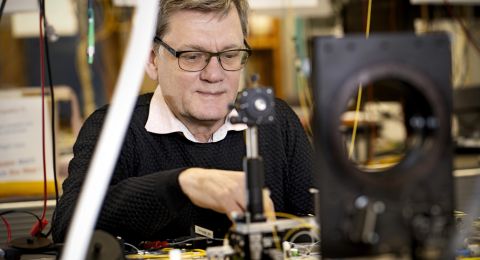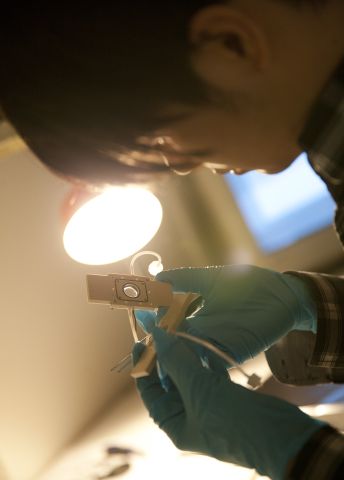
Project Grant 2012
Plasmonic antennas shine light on the nanoworld
Principal investigator:
Mikael Käll, Professor in Physics, especially bionanophotonics
Co-investigators:
Andreas Dahlin
Alexander Dmitriev
Christoph Langhammer
Eva Olsson
Fredrik Höök
Kasper Moth-Poulsen
Peter Johansson
Institution:
Chalmers University of Technology
Grant in SEK:
SEK 37.1 million over five years
Nano antennas can be used, among other things, for optical analysis of individual biomolecules, photocatalysis, solar cell research and, maybe, quantum optical effects for tomorrow’s communication technology.
“In practice, it most often involves gold or silver nano structures that can amplify visible light on the same length-scale as the structures themselves and thereby help us to see the world on the nano scale,” explains Mikael Käll.
Even if it is a matter of qualified basic research, there are large application possibilities, not least by giving better optical analysis methods and tools for continued basic research in the nanoworld. A world of particles so small that extremely powerful microscopes are needed to see them, but that have even greater significance to the world we live in and can perceive. At the nano level, the material also obtains partially other properties. Greater understanding for nano structured material and the laws that control it may therefore pave the way for new innovations and technical progress.
Gold and silver particles amplify the light
Many people are roughly aware how a TV antenna works - a series of metal ribs with exact lengths and mutual distances that, if the antenna is aimed in the right direction, together succeed in pushing the TV waves into a small receiver that connects to the antenna cable.

However, what is not as well known is that almost exactly the same concept can be used to focus, amplify and direct light waves. The large difference is of course that the light waves have such a shorter wavelength than the TV waves - a few hundred nanometers (a nanometer is one billionth of a meter) compared with around one meter - which means that antennas for light are nanostructures by necessity.
“The antennas are microscopically small although they are not quite as small as molecules - but almost - around 1,000 billion optical antennas fit on the head of a pin,” explains Mikael Käll.
Optical antennas are made with methods borrowed from the computer industry, using for example electron-beam lithography, or chemical synthesis of metallic nanoparticles.
In most cases, it involves gold or silver nano structures that have almost perfect characteristics due to the conduction electrons’ ability to fluctuate in pace with the light frequency, a phenomenon called surface plasmon resonance.
“Nano antennas of gold or silver can focus and amplify the intensity of a light wave several thousand times, in a volume that is not larger than a molecule,” explains Mikael Käll.
See how molecules couple to receptors
The project actually consists of several subprojects where different kinds of antennas will be used.
“One subproject is of significance to the field of medicine, the life sciences. The idea is to make various antenna structures to be able to discover, or detect, individual molecules and virus particles. We hope that it will be of significance to understanding various biophysical processes,” says Mikael Käll.
The idea is to be able to measure how individual biomolecules or viruses bind or detach from different kinds of receptors in real time.
“Today, such processes can only be studied on a general level, which can be compared to seeing the average height of a population instead of seeing the height of every single individual. The project is very much about a proof of principle - to show methods and ideas that work.”
Another subproject is based on the actual interaction between a molecule and the antenna being so strong that new quantum optical phenomena arise.
“It is about quantum physical processes that are of interest to basic research, but also to the IT and communication systems of the future.”
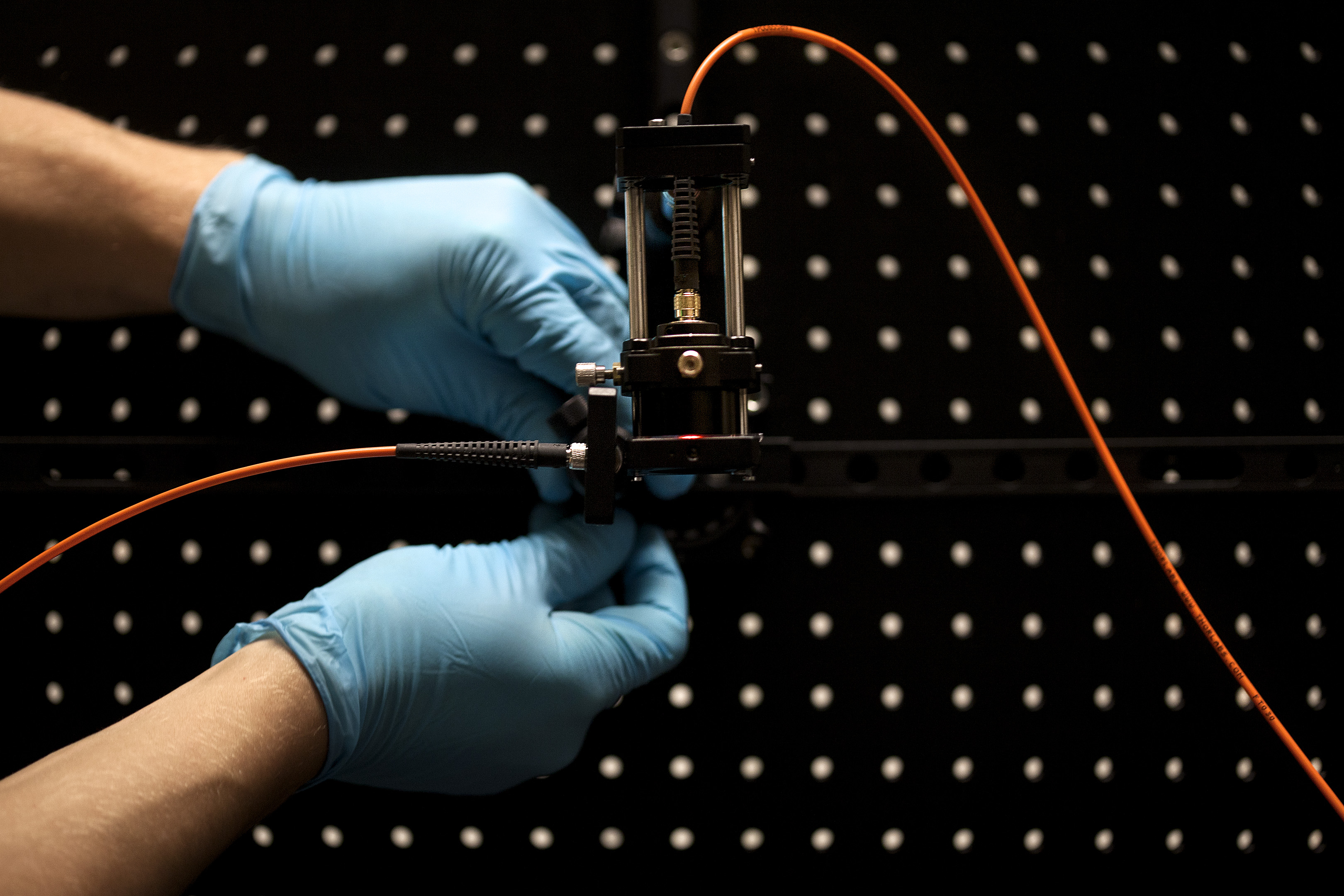
Splitting water into hydrogen gas
Another part of the project aims to understand if it is realistic to use optical antennas to amplify and simplify the use of solar energy in, for example, solar cells or through photocatalytic methods to split water into hydrogen gas, something that would be of great benefit to the world’s need for environmentally friendly energy.
“The road there is long, but it is an interesting possibility. The idea is to amplify the light intensity and the photochemical processes on a nanometer scale using antenna resonances.”
Mikael Käll explains that there is also a method-development part in the project.
“It is a matter of theory development and numerical simulation to quantify the antenna structures’ optical properties and their connection to molecules.”
The grant from the Knut and Alice Wallenberg Foundation is important.
“The entire project is a high-risk project; we might not believe that we will succeed in all parts, but the results we produce may also provide a high return,” says Mikael Käll.
Text Carina Dahlberg
Translation Semantix
Photo Magnus Bergström
More about Mikael Käll's research
Project Grant 2020
Next-generation lasers with built-in optics
Wallenberg Scholars
Driving particles with the power of light
